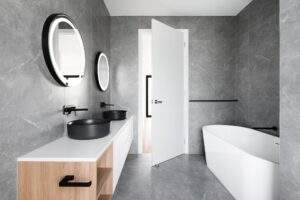Find Top 10 Easy Tips to Renew Your Attic Now

Even though every attic is different, it’s imperative to stick to some universal codes. Read up on your local residential laws on how wide an attic should be. Usually, the absolute minimum will be around 7 feet in height and width and 70 square feet. If you cannot fulfill these criteria, you will need to get extra funding to raise the roof-line to get more space. After you are done with the build-up, hire an engineer to give a thorough structural inspection of the attic.
1. Codes and Safety
You need to know whether the foundation of the house can handle the extra load (better hiring a professional than finding out the hard way). Pay attention to any cracks, holes, or weaknesses in the walls. Seal them to minimize air leaks. You might think that cold air leaks during the summer are no big deal, right? Repeat that once you get the energy bill. Air leaks strain your HVAC and create unnecessary expenses for you.
2. Get a Permit
Most renovations don’t require permits, however, if you are making electrical and ventilation changes then you most certainly have to get one. You need to get a permit for any structural changes to the building, so if you want to tear down a wall, you need to get a permit for that. Although be certain and check out your local residential laws on the topic. If you are planning on selling the house, a permit becomes all the more advised. To get a permit, you need to have a detailed plan that has been reviewed by a licensed engineer/architect. And the work needs to be done in accordance with the latest building codes.
3. Clean it Out
Once your attic is up to code, you want to work in a clean and safe environment. This is why the first step in the physical labor part of the renewal project should be de cluttering and cleaning the space out. Working with a bunch of old stuff in the way just provides the workspace with unnecessary hazards.
4. The Staircase
If you are planning on the attic being a livable room and not just a storage space, you will need to have a safe and wide staircase. Just think about how much space and an opening you will need to move furniture up the attic.
5. Insulation Options
Insulation is one of the most important parts when renewing your attic. Don’t settle for low-density fiberglass insulation just to save a few bucks. High–density fiberglass is best used for vaulted ceilings where a high R-value is needed. Making the attic more energy efficient does cost more at the start, but it saves you a lot of money down the road for cooling and heating expenses. Spend a bit extra on spray foam, as it forms a tighter air barrier.
They are great for walls and ceilings and easy to DIY. Venting the attic allows for outdoor air to flow into the attic during the winter, while also being a path for hot air to exit during the summer. Up to R-60 insulation is recommended by The Department of Energy depending on the area where you live.
6. Put in a Ceiling Fan
Attic fans are great for home temperature regulations and are a factor in more efficient energy consumption in the house depending on how well-insulated your home is. They are not normal house fans, they push hot air outside and pulling colder air inside, keeping a constant well-balanced room temperature.
7. Attic Lighting
Converting the attic into a living space or a more lively room requires adequate natural lighting. Adding a few light bulbs defeats the entire purpose of converting the attic into a more approachable space. Don’t generate unnecessary heat, and build at least one window from which natural light will shine in.
8. Wiring
If you are planning on having electrical appliances in the attic, extra wiring will be needed. This is a task best done by your local electrician. Don’t play around with wiring and electricity. You risk shorts and electrical fires, and possible injury. Share your plan with the electrician to maximize efficiency, and even mold a better wiring plan.
9. Consider Adding a Bathroom
This one might seem trivial, but if you are planning on making the attic a bedroom then, by all means, spend the extra money on adding a bathroom as well. It’s a life-saver! Even if it’s being used as a recreation room, adding a bathroom makes the room more appealing (and also more expensive on the market).
10. Flooring
Once all is said and done, it’s time for the finishing touches – the flooring. Decide what type of flooring you want in the attic and whether you want a carpet as well. You can do this part yourself or by hiring a contractor. Carpets add a sound barrier in between the floors, so it’s a good option if someone is planning on sleeping in the attic.







